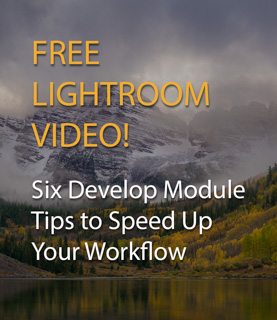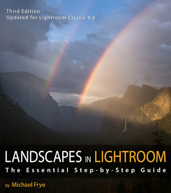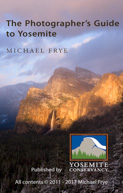In the Moment:
Michael Frye's Landscape Photography Blog
by Michael Frye | Nov 30, 2025 | Light and Weather, Travels and Stories
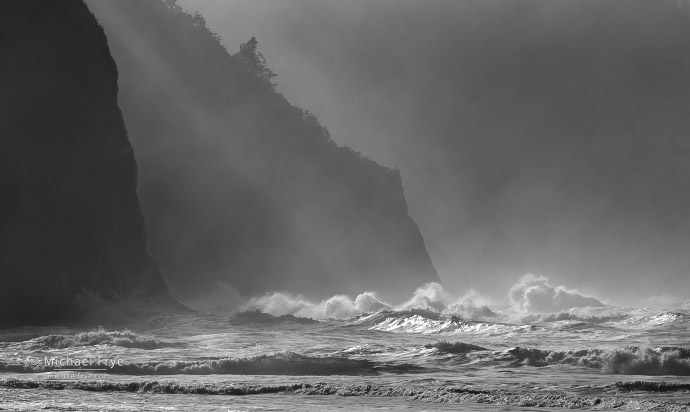
Waves, fog, and sunbeams along the Oregon Coast. I waited for the sun to crest the ridge on the left and light the large waves rolling in, using a fast shutter speed (1/500 sec.) to freeze the motion. I liked this moment, with sunbeams and a series of wave splashes.
Claudia and I just returned from our annual trip to the Oregon Coast. Our workshop went really well, with a small, wonderful group of participants. And we had some beautiful light to work with.
One of the things I told the group was how much I love the variety of light and moods you can photograph along the Oregon Coast. The weather seems to change constantly (in November at least). One day it’s stormy and dramatic, the next day (or minute) it’s foggy and ethereal. Or something else. With the changeable weather, and the shifting tides and waves, it’s a dynamic environment, where you have to be on your toes to capture moments when the light, weather, and waves come together to create something interesting and beautiful.
Those moments are frequent, but fleeting. You need to anticipate when something might happen, or be able to switch gears quickly when things change.
(more…)
by Michael Frye | Nov 27, 2025 | Announcements
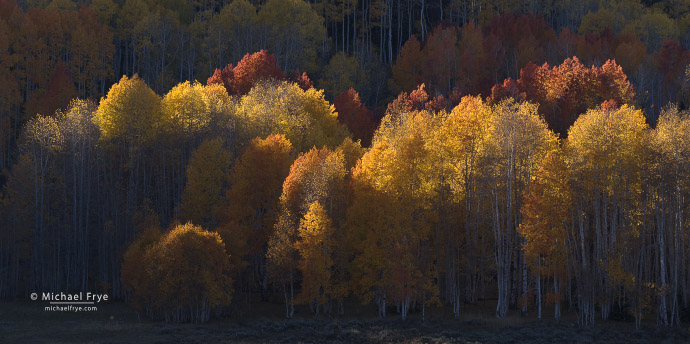
Backlit aspens, Utah
It’s Thanksgiving Day here in the United States – a good time to pause and think about all the things we have to be grateful for.
I’m very thankful for my family and friends. I’m grateful that our son is married and settled and happy. I’m so lucky to have been married to the same wonderful woman for 39 years – the best partner I could possibly have for all of life’s adventures.
I’m grateful for the opportunity to see and photograph so many beautiful places. This year Claudia and I traveled to Antarctica, Japan, Greenland, the Smokies, and all over the western U.S. What an incredible planet we live on!
And I’m always very grateful for the support I receive from you, my faithful blog readers. Your comments and emails help make writing this blog fun, and keep me motivated and inspired. Thank you!
Whether or not you celebrate Thanksgiving (or live in a country that celebrates it on a different day), I hope you all have a lot to be thankful for!
— Michael Frye
by Michael Frye | Nov 7, 2025 | Announcements
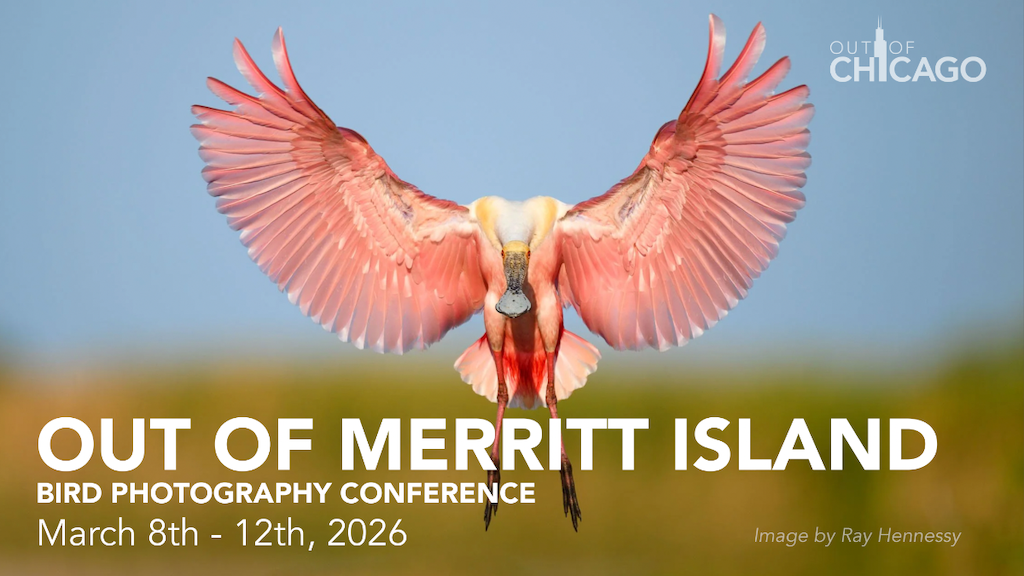
I’m excited to announce that I’ll be an instructor at the Out of Merritt Island Bird Photography Conference in March!
I’ll be joined by a stellar lineup of fellow instructors, including Ray Hennessy, Mary Anne Karren, Isaac Grant, Nick Page, David Akoubian, Alyce Bender, and Chrissy Donadi (12 instructors in all). The conference will be based in Cocoa Beach, close to some of Florida’s best bird-photography locations like Merritt Island National Wildlife Refuge, Canaveral National Seashore, Orlando Wetlands, and Sebastian Inlet. And we’ll get to photograph some of Florida’s abundant, unique, and accessible bird species, including Roseate Spoonbills, Tri-colored Herons, Glossy Ibises, Anhingas, Purple Gallinules, Limpkins, Ospreys, Snail Kites, Wood Storks, Reddish Egrets, Scrub Jays, Magnificent Frigatebirds, Black Skimmers, Black-necked Stilts, and Crested Caracaras.
(more…)
by Michael Frye | Oct 30, 2025 | Light and Weather, Travels and Stories

Dappled light at a canyon overlook, Utah
Claudia and I are finally on our way home after our long road trip. It’s been a fantastic journey, and we really don’t want it to end, but we’ll be back on the road again soon, heading to the Oregon Coast. That’s one of my favorite places to photograph, so I’m looking forward to that already.
I’ve made lots of new images on this trip that I’m excited about. It’ll take some time to sort through and process them all, but here are a few photos from one stormy day in Utah.
(more…)
by Michael Frye | Oct 19, 2025 | Travels and Stories
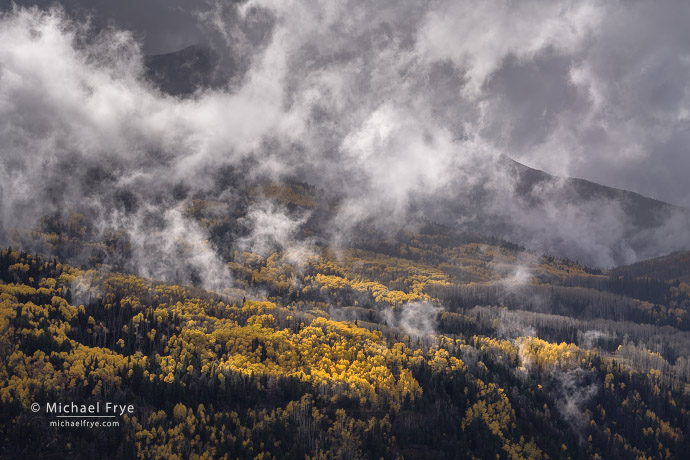
Clouds, mist, and aspens, Colorado
After returning from Greenland, Claudia and I spent only a few days at home before starting a road trip to Utah and Colorado. We began by photographing autumn aspens and maples in the Wasatch Mountains of Utah, then moved to western Colorado for more aspens. Now we’re back in Utah, but in the southern part, with red-rock deserts and yellow cottonwood trees. We’re having a great time.
I’ve been making lots of photographs, so it’s hard to keep up with the backlog of images, but here are a couple of my favorites from the trip so far. These are from southwest Colorado, with mist and clouds created by the remnants of Hurricane Priscilla as it moved through the area and dumped large quantities of rain.
(more…)
by Michael Frye | Oct 5, 2025 | Travels and Stories, Wildlife Photography
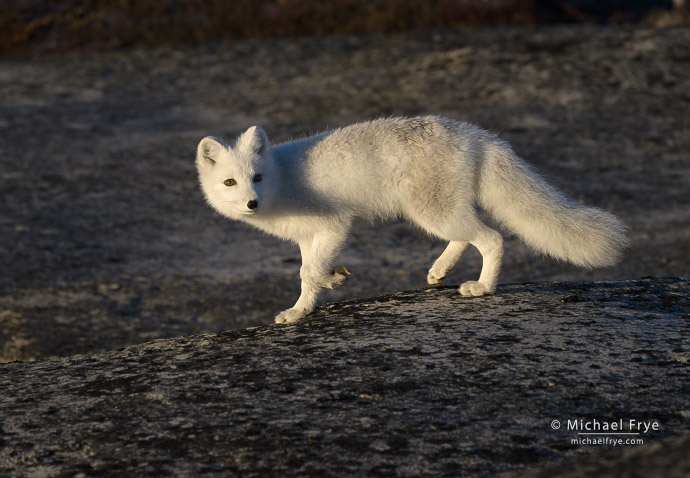
Arctic fox, Scoresby Sund, Greenland
Scoresby Sund, the area of east Greenland we visited on our Visionary Wild trip last month, is spectacularly beautiful. But I didn’t expect to see much wildlife there, because this region is actively hunted by the local Inuit people.
So I was pleasantly surprised by how much wildlife we actually saw, including musk oxen, Arctic hares, Arctic foxes, and polar bears.
(more…)
by Michael Frye | Sep 25, 2025 | Travels and Stories
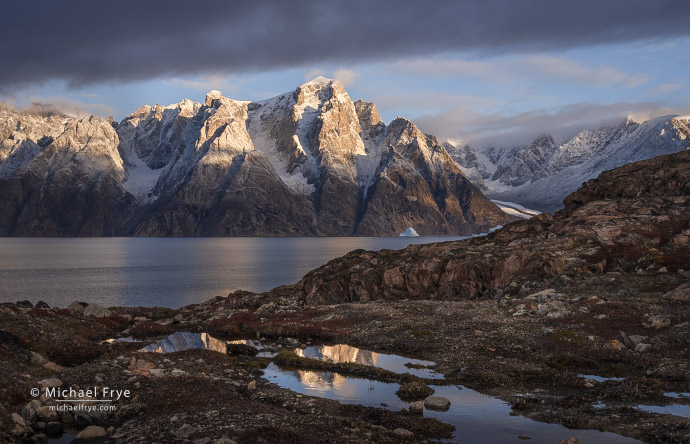
Pond, peaks, fiord, and glacier at sunrise, Scoresby Sund, Greenland
Claudia and I just got back from our trip to Greenland with Visionary Wild… and it was fantastic. This is such a beautiful part of the world, and we got to experience it with a wonderful group of people – our 16 lively and friendly participants, our fantastic ship’s crew, and my amazing co-instructors, Jerry Dodrill and Chris Linder.
Our Greenland expedition focused on Scoresby Sund, on the east coast. While the interior of Greenland is covered by the Greenland Ice Sheet, the second-largest body of ice on Earth (after the Antarctic Ice Sheet), Scoresby Sund is a land of sharp peaks and rocky fiords, with glaciers carving through the mountains and depositing icebergs into the sea. Scoresby Sund is considered the largest fiord system in the world, with many long, narrow channels, and mountains rising dramatically from the water to over 6,000 feet above sea level.
(more…)
by Michael Frye | Sep 1, 2025 | Light and Weather
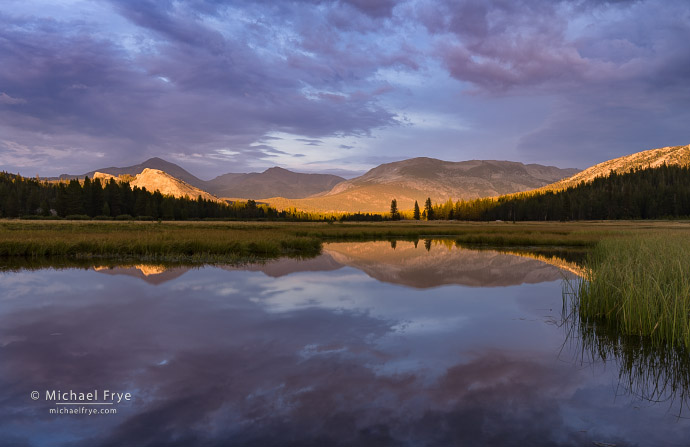
Sunset light, high country, Yosemite NP, California. I made this photo on Monday evening as the sun sank into a gap in the clouds and started to light the peaks.
Subtropical regions of the world experience monsoons every summer. The most famous monsoon occurs over the Indian subcontinent. But North America also gets a monsoon. It’s a complex weather process, but a primary force is the hot summer temperatures over land, which creates a localized low-pressure area, which in turn pulls moisture from the Gulf of California (and, to a lesser extent, the eastern Pacific and Gulf of Mexico) over the deserts of northern Mexico and the southwestern U.S. This monsoonal moisture brings thunderstorms to these regions, especially over higher terrain. While these thunderstorms are usually scattered widely, they can cause intense downpours over local areas, generating flash floods.
Here in central California we’re at the outer limits of the North American monsoon region. Monsoonal moisture typically reaches us for only a few brief stretches each summer, and often only generates showers and thunderstorms over higher elevations as that moisture gets pushed upward, cooling the air and causing the water vapor to condense into clouds and rain.
(more…)
by Michael Frye | Aug 25, 2025 | Digital Darkroom
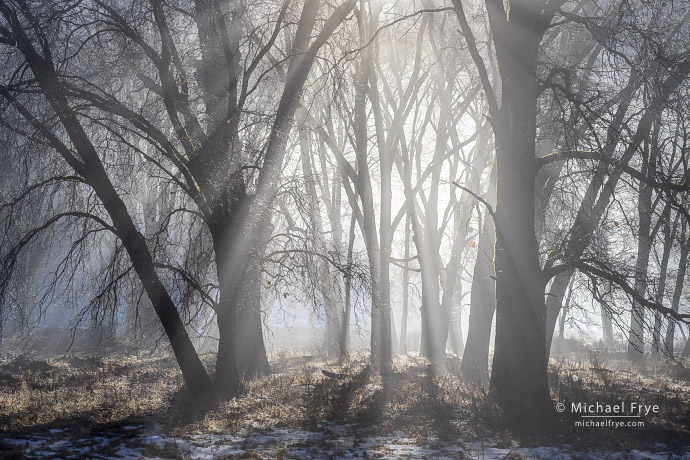
Oaks and mist, Yosemite NP, California. I love the light and fog in this scene, but couldn’t avoid including a distracting wire-mesh enclosure in the composition (see below).
Thanks to everyone who joined us for my Lightroom Webinar: Advanced Retouching on Saturday. It was an engaging, fun, and, I hope, educational session, and it was great to see so many familiar names among the attendees. I appreciate all the thoughtful questions, as they helped broaden the discussion and clarify many points.
One of the things we covered on Saturday was the pros and cons of AI-powered retouching in Lightroom – and how to work around the limitations. Generative Remove in Lightroom and Camera Raw, along with Generative Fill in Photoshop, have certainly made many retouching jobs a lot easier. But one thing that many people don’t realize is that these AI-powered tools can create low-resolution results. So when you remove an object with Generative Remove, that patch, that area where you replaced the object with AI-generated content, might look softer than its surroundings. That’s probably fine for posting an image online, because no one will notice that softness at a small viewing size. But it can be a significant problem when making prints.
(more…)
by Michael Frye | Aug 17, 2025 | Digital Darkroom, Photography Tips
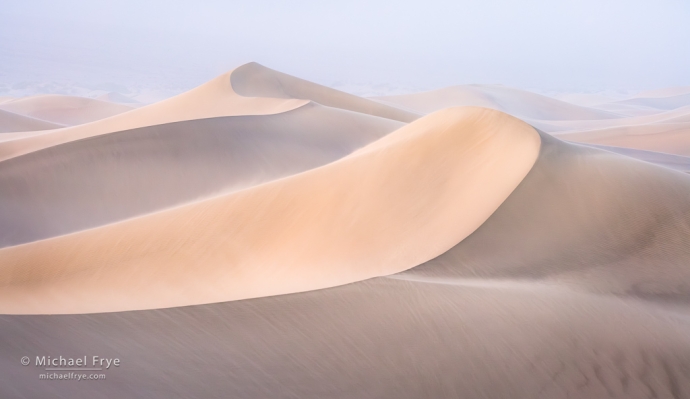
Dunes at sunrise in a sandstorm, Death Valley NP, California. During a dust storm, as you might expect, my sensor accumulated plenty of dust spots (see the next image below).
Removing dust spots from an image can be a tedious chore. Do you want to do that tiresome job twice? I certainly don’t – which is why I remove dust spots in Lightroom, rather than Photoshop.
There’s no way to do retouching in Photoshop in a completely flexible, non-destructive way that adapts to any further changes you make to the underlying layers. But when you remove a spot or object in Lightroom (or Camera Raw), the retouching will always adapt, no matter what you do to the image in the future. Even if you make a drastic change, like lightening the photo by two stops, making a big adjustment to the white balance, or converting it to black and white, the retouching in Lightroom will adapt and blend in seamlessly. And that means you’ll never, ever, have to do it again – which, for me, is a big advantage.
(more…)











